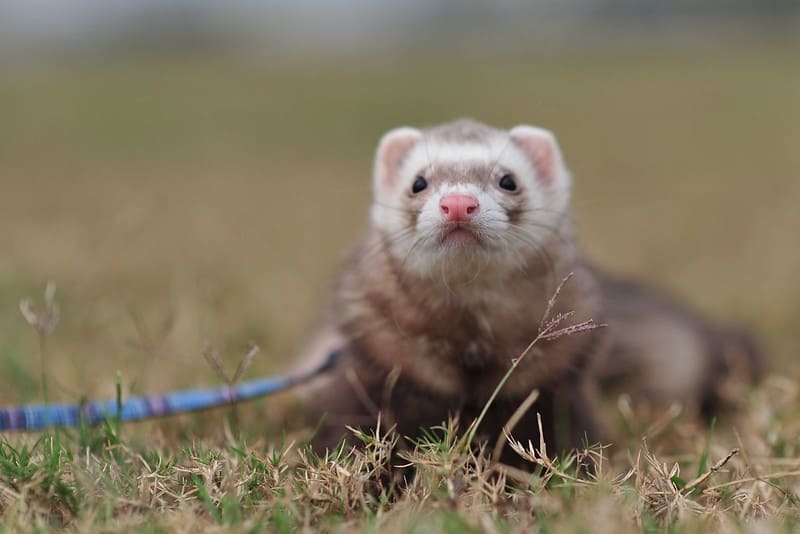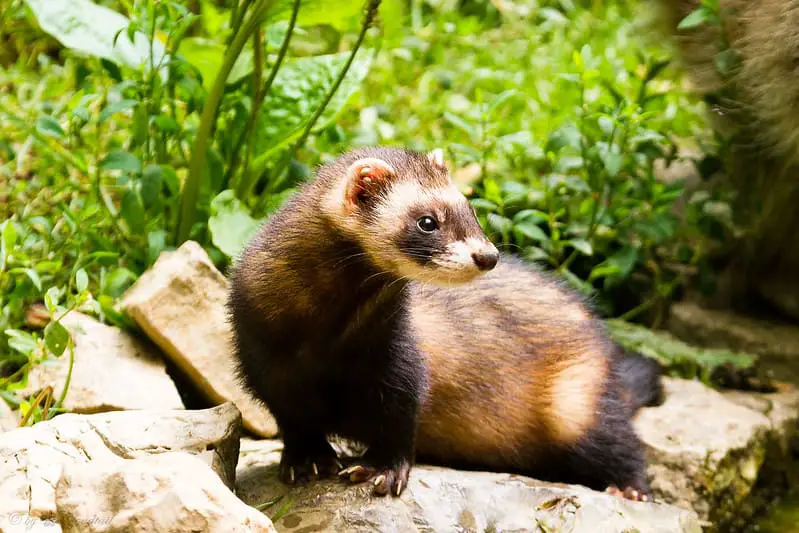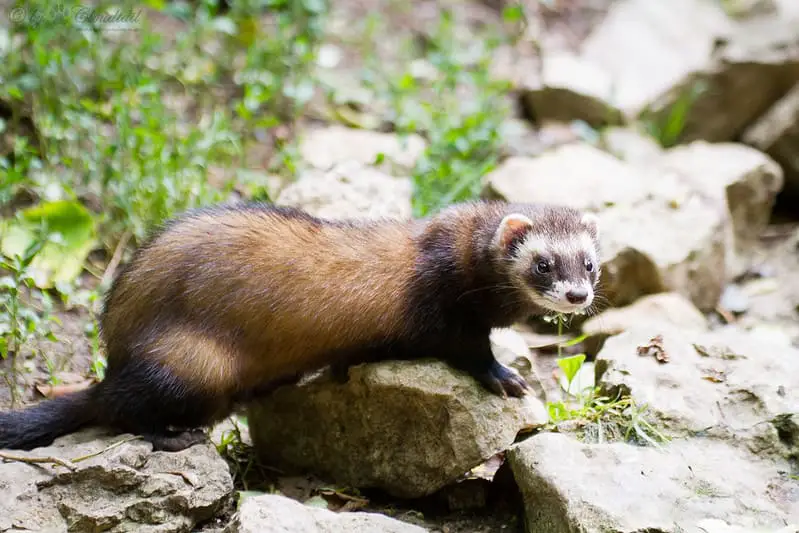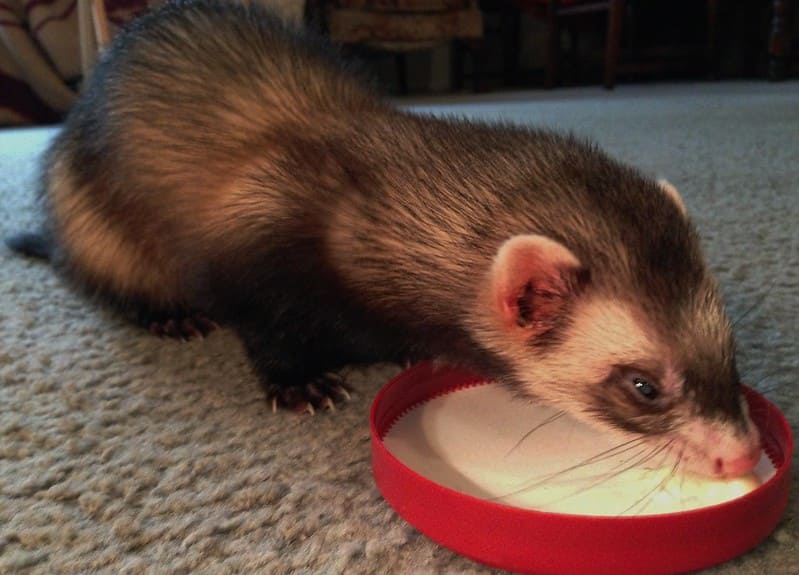The ferret, a small carnivorous mammal with a playful and mischievous nature, has a long and storied history that spans thousands of years. This domesticated animal is believed to be a close relative of the European polecat and was originally domesticated for various practical purposes. In this comprehensive exploration, we will delve into the origins of the ferret, tracing its journey from the wild to domestication and its roles in different cultures throughout history.

Ferret Taxonomy and Classification
Before delving into the history of ferrets, it’s important to understand their taxonomic classification and their relationship to other carnivorous animals. Ferrets belong to the animal kingdom, phylum Chordata, class Mammalia, order Carnivora, and family Mustelidae. The Mustelidae family, also known as mustelids, includes a wide range of carnivorous mammals, many of which are known for their hunting abilities and distinctive behaviors.
Within the mustelid family, ferrets are classified as Mustela putorius furo, which places them in the same genus as the European polecat, Mustela putorius. Ferrets are closely related to polecats, weasels, and other mustelids, sharing many common characteristics and behaviors.
The Wild Ancestry of the Ferret
To understand the origins of the ferret, we must first examine its wild ancestors. The ferret’s closest wild relative is the European polecat (Mustela putorius), a small carnivorous mammal native to Europe and parts of Asia. Polecats are known for their slender bodies, long tails, and sharp hunting instincts.
The European polecat serves as the primary ancestor of the domestic ferret. The domestication of ferrets is believed to have originated from the selective breeding of polecats with specific desirable traits. Over generations, these traits were further refined, leading to the development of a distinct domestic ferret breed.

Early Domestication and Utilization
The exact timeline and region of ferret domestication remain subjects of debate among scholars, but it is generally agreed that ferrets have a long history of domestication that dates back thousands of years.
Ancient Greece and Rome
Evidence of ferret domestication can be traced to ancient Greece and Rome, where these animals were used for hunting purposes. The ancient Greeks and Romans selectively bred ferrets to create efficient hunting partners. These early domesticated ferrets were employed for a specific hunting practice known as “ferreting,” where they were used to hunt rabbits and other small game by flushing them out of their burrows. Ferrets’ slender bodies and natural instincts for hunting made them well-suited for this purpose.
Medieval Europe
Ferrets continued to be employed for hunting in medieval Europe. The practice of ferreting, or “ferret hunting,” was prevalent among European nobility, especially in England and France. Ferrets were valuable for controlling rabbit populations, which were considered agricultural pests. Their use in rabbit hunting contributed to the development of specialized breeds known as “polecat-ferrets,” which were selectively bred for hunting skills.
Transition to Companionship
Over time, the role of ferrets began to shift from primarily utilitarian to that of companionship. By the 19th century, ferrets had become pets for many, particularly among the working class. Their playful and affectionate nature, along with their compact size, made them appealing as domestic animals. While they were still used for hunting purposes, many ferrets began to find their place as beloved family pets.
Ferrets in Different Cultures
Ferrets have had a presence in various cultures throughout history, often in roles related to hunting, folklore, and even superstition. Let’s explore how ferrets have been perceived and integrated into different cultures:
1. England
Ferrets have a long history in England, where they were used extensively for hunting. The term “ferret” itself is believed to have originated from the Latin word “furittus,” which means “little thief.” The name reflects the mischievous and curious nature of these animals.
In England, ferret hunting was not only a practical means of pest control but also a popular sport among the nobility. The “ferret legging” tradition, though a peculiar one, exemplified the close association of ferrets with English culture. It involved placing two live ferrets inside one’s trousers and seeing how long one could endure their sharp claws and teeth without flinching.
2. Ancient China
Ferrets have historical significance in ancient Chinese culture. They were used as hunting animals, particularly for hunting rabbits, which were abundant in the Chinese countryside. The use of ferrets in hunting was well-documented in ancient Chinese texts, paintings, and sculptures.
3. Japan
In Japan, ferrets were traditionally used for hunting birds. Known as “inu,” “inu-musuri,” or “toki,” they were specifically bred and trained for this purpose. While their use in bird hunting has waned in modern Japan, ferrets remain cherished as pets and can occasionally be seen in traditional festivals and folklore.
4. North America
Ferrets were not native to North America, but European settlers introduced them to the continent. In the 19th century, ferrets were utilized to help control the population of rabbits, which had also been introduced and were causing ecological imbalances. They played a significant role in keeping the rabbit population in check and preventing agricultural damage.
5. Africa
Ferrets have also found their way into African cultures, primarily as exotic pets. Their playful and inquisitive nature makes them intriguing and entertaining animals to keep as companions. However, the availability and popularity of ferrets in Africa can vary by region.

Ferrets as Pets
In modern times, ferrets are primarily kept as pets, and their roles in hunting have diminished significantly. They have become popular for their unique and endearing personalities. As pets, ferrets offer a combination of playful antics, affectionate behaviors, and a strong bond with their human caregivers.
Characteristics of Ferrets as Pets:
- Playfulness: Ferrets are known for their playful nature. They love to explore, chase toys, and engage in mock hunting behaviors, providing endless entertainment for their owners.
- Affection: Despite their reputation as mischievous troublemakers, ferrets are affectionate animals. They often form strong bonds with their human caregivers and enjoy cuddling and being close to their loved ones.
- Curiosity: Ferrets are curious creatures that enjoy investigating their surroundings. They’ll eagerly explore new spaces and objects, which can sometimes lead to comical and unexpected situations.
- Sociability: Ferrets are social animals that benefit from interaction with both their human family and other ferrets. Their need for companionship highlights the importance of keeping them in pairs or groups when possible.
- Adaptability: Ferrets are adaptable pets and can thrive in a range of living situations, including apartments and houses. They require a secure living environment and mental stimulation to prevent boredom.
- Low Maintenance: While ferrets require regular care, they are generally considered low-maintenance pets compared to some other animals. They don’t need to be walked outside like dogs, and their litter box training is relatively easy.
- Longevity: With proper care, ferrets can live for an average of 6 to 10 years, making them a long-term commitment for pet owners.
Caring for Pet Ferrets:
To provide the best care for pet ferrets, it’s important to consider their specific needs and requirements:
- Diet: Ferrets are obligate carnivores, meaning they require a diet primarily composed of animal-based protein. High-quality commercial ferret food is essential, and treats should be given in moderation.
- Housing: Ferrets need a secure living environment with ample space to play and explore. Multi-level cages with plenty of toys and hiding spots are ideal.
- Social Interaction: Ferrets are social animals that benefit from the company of other ferrets. Consider keeping them in pairs or groups for companionship.
- Play and Enrichment: Providing toys, tunnels, and interactive playtime is crucial for keeping ferrets mentally stimulated and physically active.
- Grooming: Ferrets have a dense, short coat that requires minimal grooming. Regular nail trimming and teeth cleaning are important aspects of their care.
- Healthcare: Routine veterinary check-ups are essential to monitor your ferret’s health and prevent common illnesses. Vaccinations and preventive treatments should be administered as recommended by your veterinarian.
- Litter Training: Ferrets can be litter trained, making them relatively easy to manage in terms of cleanliness. Providing a litter box in their cage and other key areas is important.

Conservation Status
Ferrets, both wild and domesticated, are not considered endangered or threatened species. However, some wild subspecies of ferrets, such as the black-footed ferret (Mustela nigripes), have faced significant conservation challenges.
The black-footed ferret, once thought to be extinct, was rediscovered in the 1980s, and conservation efforts were initiated to save this species. The black-footed ferret has been successfully bred in captivity and reintroduced into the wild in an effort to restore its population. Conservationists continue to work on preserving the habitat and population of this remarkable species.
Conclusion
The history of the ferret is a rich tapestry that weaves together its wild ancestry, early domestication for utilitarian purposes, and its transition to becoming beloved pets. From ancient civilizations to modern households, ferrets have had a unique and enduring presence in human culture.
As pets, ferrets continue to enchant their owners with their playful antics, affectionate nature, and adaptability to different living environments. While their roles in hunting have largely diminished, their ability to form strong bonds with humans and other ferrets remains a central part of their appeal.
The history of the ferret serves as a testament to human ingenuity and the remarkable ability of humans to form meaningful connections with the animal kingdom. From hunting companions to cherished pets, ferrets have indeed come a long way in their journey through time. Today, they bring joy and companionship to countless households around the world, perpetuating their remarkable story of evolution and domestication.
